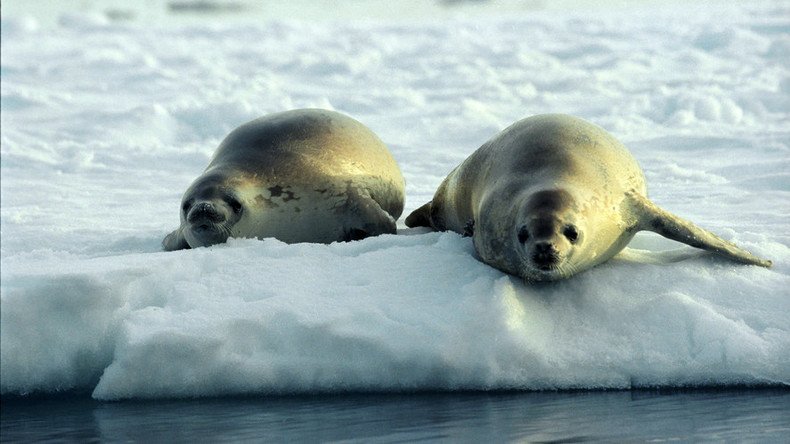Terrifying beauty: 8,000 new lakes in Antarctica alarm scientists

Thousands of scenic blue lakes have formed on the ice sheets of East Antarctica, and while they may be beautiful, their appearance has scientists extremely worried.
To scientists, the scenic phenomena closely resembles the worrisome trend in Greenland – the world’s fastest melting ice mass, which lost one trillion tons of ice between 2011 and 2014.
Nearly 8,000 of these supraglacial lakes formed on the Langhovde Glacier in East Antarctica between 2000 and 2013, according to a new study by a team of researchers that analyzed hundreds of satellite images.
READ MORE: Climate chaos in UK driven by melting ice-caps, warming over Greenland - study
As global temperatures rise, the lakes are filling with blue meltwater from the ice and surrounding glaciers.
These beautiful supraglacial lakes could be detrimental to #Antarctica's glaciers.https://t.co/x0zZWAtbRlpic.twitter.com/HjMBCf0N8s
— Antarctica Coalition (@AntarcticaSouth) August 23, 2016
Worryingly, as the meltwater drains through to the underlying ice, it can erode the ice sheet’s foundation, weakening it and causing it to eventually break apart.
The process is thought to have contributed to Greenland’s unprecedented loss of ice, but this is the first time it has been observed in Antarctica – a place scientists thought, until now, was relatively unscathed by the warming climate.
Antartica glaciers dotted with blue lakes of melting ice. Beautiful but ominous https://t.co/kE2ZxgMSuM
— Somerset Trader (@SomersetTrader) August 20, 2016
“[East Antarctic is] the part of the continent where people have for quite a long time assumed that it’s relatively stable,” said Stewart Jamieson, one of the study’s authors from the UK’s Durham University, to The Washington Post.
“There’s not a huge amount of change; it’s very, very cold, and so, it’s only very recently that the first supraglacial lakes, on top of the ice, were identified,” he explained.
See the coasts while you can... https://t.co/W5LqYn7Xlg Thousands of #Supraglacial lakes forming in #Antarctica#WaterPlanet
— Jeffrey Hayner (@JeffreyHayner) August 23, 2016
The team found that the abnormal increase in Antarctic temperatures has caused the lakes to suddenly appear.
In the summers of 2012 and 2013, there were a total of 37 “positive degree days” recorded and an unheard of daily surface air temperature of 0.8 degrees Celsius in January.
READ MORE: July 2016 hottest month ever recorded on Earth
“What we find is that the appearance of these lakes, unsurprisingly, is correlated directly with the air temperature in the region, and so the maximum number of lakes, and the total area of the lakes, as well as the depth of the lakes, all of these things peak when the air temperatures peak,” Jamison told the paper.
"supraglacial - or meltwater - lakes...could have serious consequences for the stability of the entire ice shelf." https://t.co/GP06nAfFPL
— stephanie jo kent (@stephjoke) August 23, 2016
And with July 2016 now confirmed as the world’s hottest month since records began, the future of Antarctica’s ice doesn’t look bright.
“The size of the lakes... are probably not big enough to do much at present, but if climate warming continues in the future, we can only expect the size and number of these lakes to increase. So that’s what we’re looking at,” Jamieson said.













